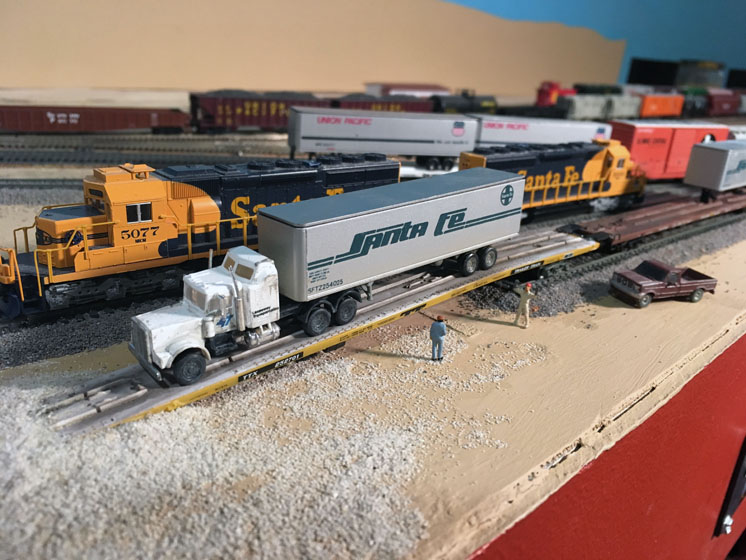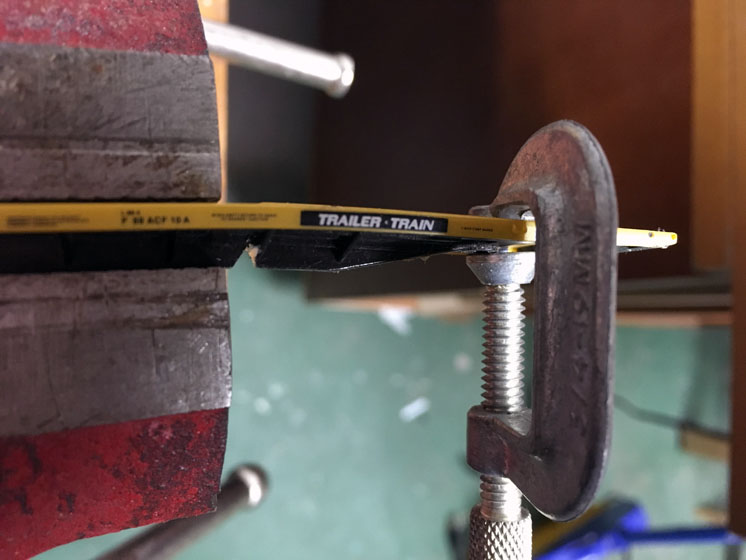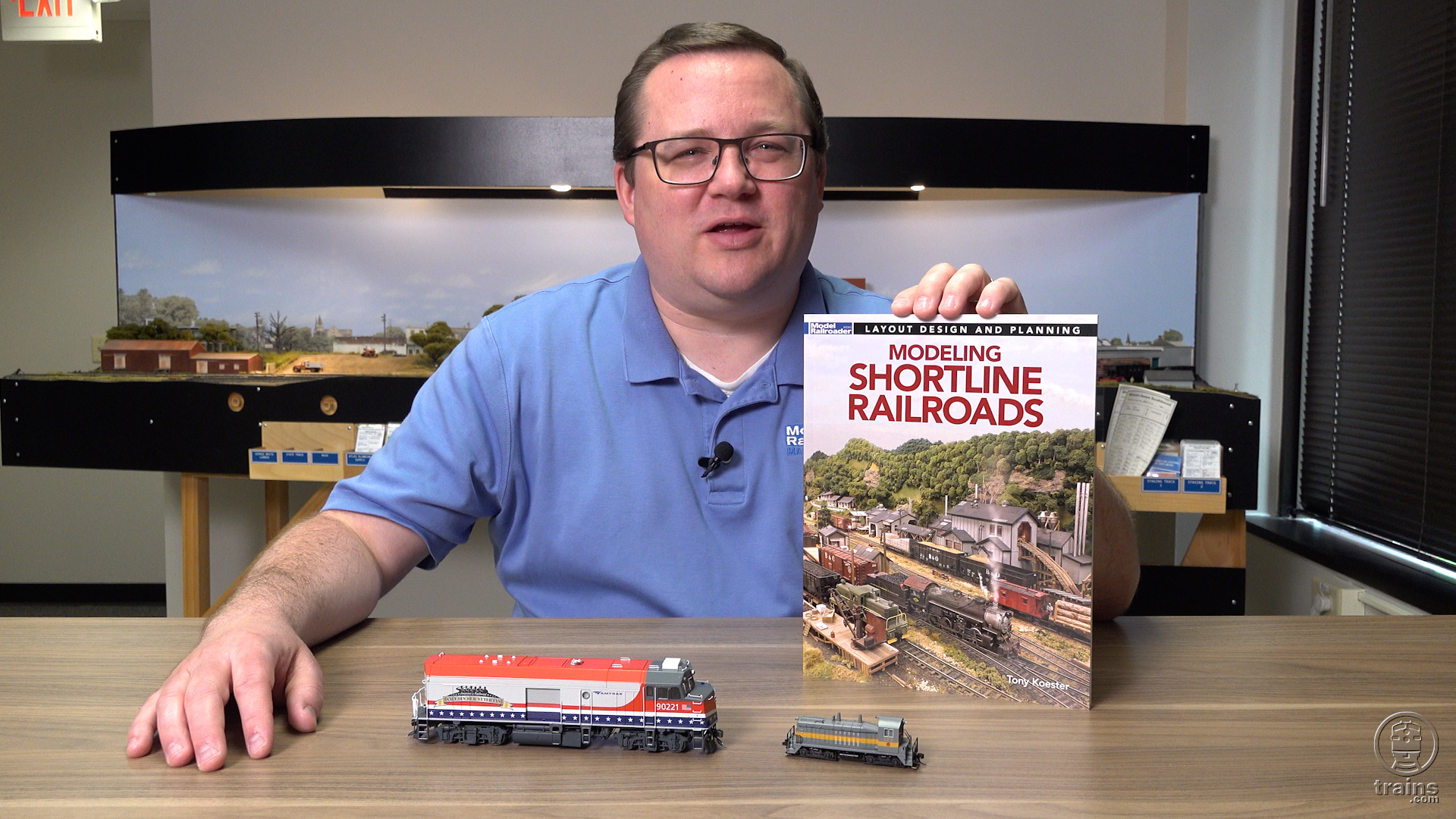
A year or two after being introduced to Tehachapi, Jim and I were back at the Santa Fe yard in Bakersfield. This time I was loaded with about a dozen rolls of film and the intent to photograph everything in sight as reference material for designing and building my layout.
Naturally, as it turned out, I didn’t take enough photos, but then in those days, we almost never did. Film and developing weren’t cheap and one had to be a bit choosy. After all, this was the pre-digital camera era. Digital cameras have become quite an aid to our modeling. When in doubt, just shoot it and sort it all out later. So often the mundane subjects are just the ones we need for modeling.
The Bakersfield yardmaster in the early 1980s, Ken Hatfield, was showing Jim and me around. Among the many interesting things we saw was a loading ramp made from an 89-foot flatcar.
Ken was justifiably proud of this creation, pointing out that when equipment hits it a little too hard, which is bound to happen sooner or later, “It just shoves the ramp back a little and we go in with a front-end loader and put it back.” This, he pointed out, was a lot more economical than spending thousands of dollars to build a concrete or wood ramp that would inevitably get torn up.
Railroads have always been known for their resourcefulness, and this was one more example. The earliest tank cars were tubs mounted on flatcars. Phased-out boxcars have been used for storage, yard offices, and even stations, although usually just temporarily. Even the boilers from steam locomotives were sometimes recycled for stationary use at canning factories or small power plants.
Building the ramp
The hardest part of this project might be sacrificing a Micro-Trains 89-foot flatcar. These are gorgeous pieces of rolling stock and not exactly inexpensive. Maybe you can pick one up cheap at a swap meet, or maybe you’ll get “lucky” like I did and damage one beyond repair.
On the bright side, you can save one truck as a spare to use on another car. You’ll need one truck for this project, but it can be one that was broken or replaced because it caused derailments.
My first concern was bending the flatcar without breaking it. Step one was separating the metal frame from the plastic deck.
Then I filed a notch in the center sill 26 scale feet back from the end of the car. You want to allow enough distance for the tractor backing the trailer to level off before moving out onto the flatcar. As you can see in in the image above, my notch is a lot bigger than it need have been.
I bent the frame in my bench vise by trial-and-error, taking it back and forth to the layout a few times to check it out. I glued the frame and deck back together with Walthers Goo. First I spread a thin layer on each of the surfaces to be joined, let the Goo set for several minutes, then clamped the parts together in my vise. I used a miniature C-clamp to secure the short deck section beyond the bend. All that was left to do was attach the truck and glue the wheels to the track. I used a cyanoacrylate adhesive (CA) gel for those jobs.
A bit of history
I like projects like this because they freeze a blip in history on our layouts. My Bakersfield yard is set in 1985, during a time when the railroad industry was rapidly transitioning from the boxcar era to the intermodal period we’re in now.
Trailers on flatcars (TOFC) would soon be overtaken by containers on flatcars (COFC). Circus-style loading ramps like this would be gone, just as the icing platforms once served by the same tracks used for this improvised ramp.














